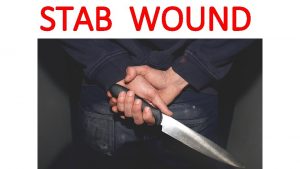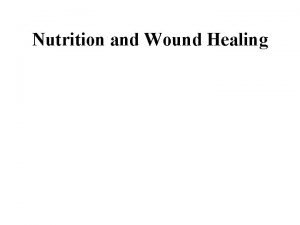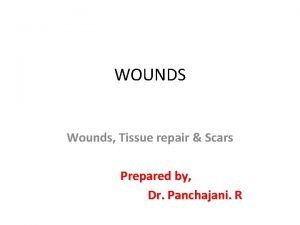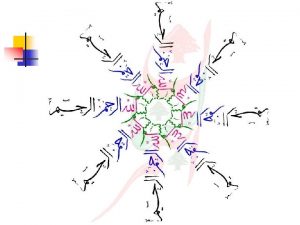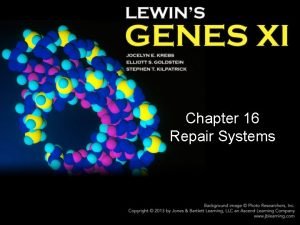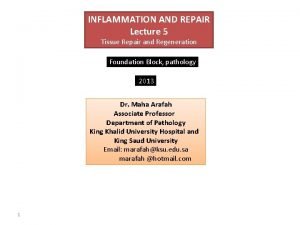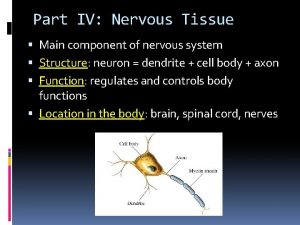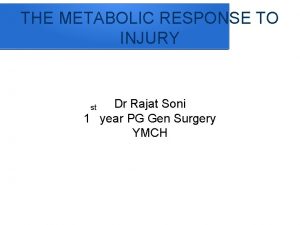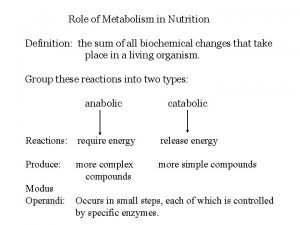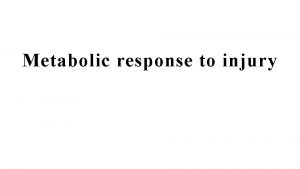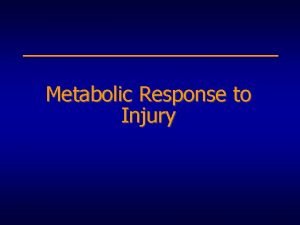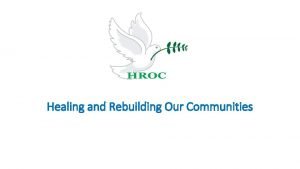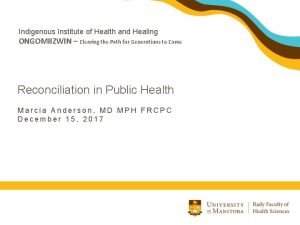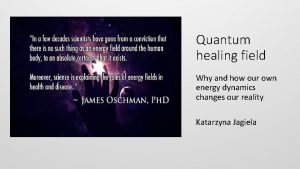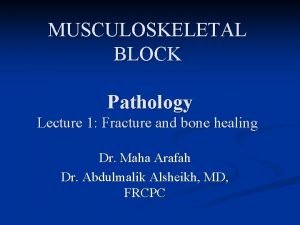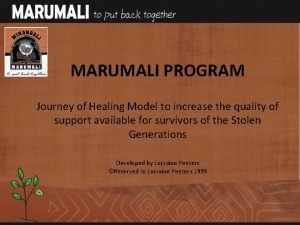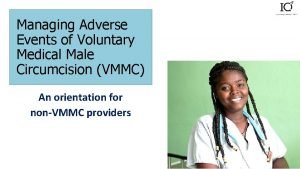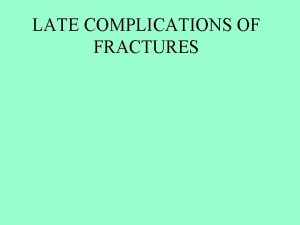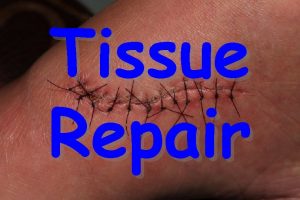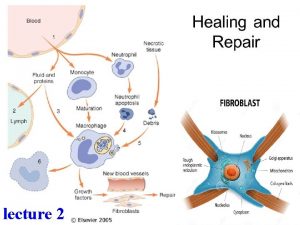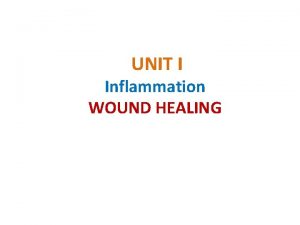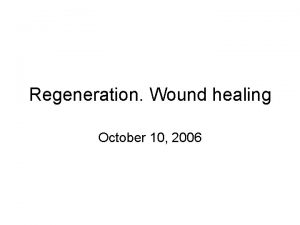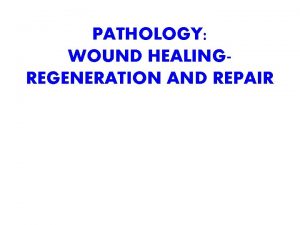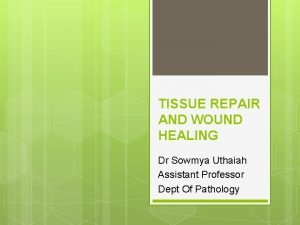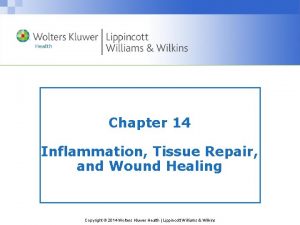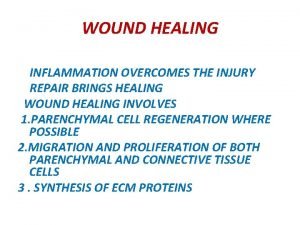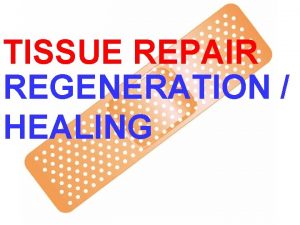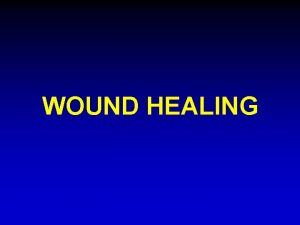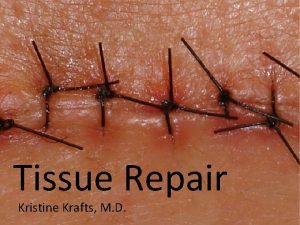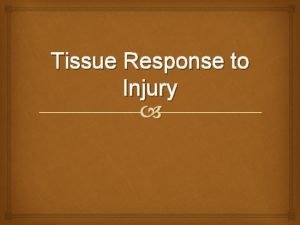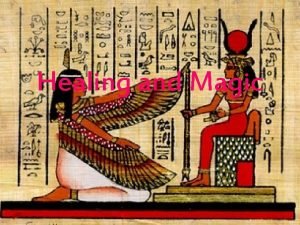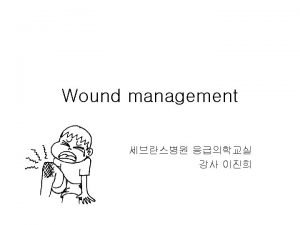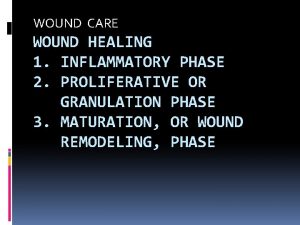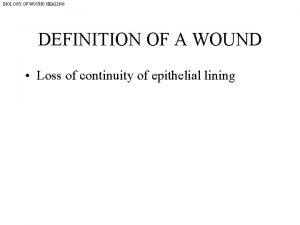Wound Healing Tissue injury and response Wound repair































- Slides: 31

Wound Healing 林燦勳醫師

Tissue injury and response Ø Wound repair Tissue to restore normal function and structure after injury Ø Regeneration Perfect restoration of the preexisting tissue architecture in the absence of scar

Wound closure type Ø Primary ( first-intension) Simple suturing, skin graft replacement, or flap closure Ø Secondary ( spontaneous-intension) Reepithelization and contracture Ø Tertiary (delayed primary)


Wound healing phase Ø Inflammatory phase limit damage, preventing further injury Ø Proliferative phase reepithelization, matrix synthesis, neovasculation Ø Maturation phase Scar contraction with collagen cross-linking, shrinking, and loss of edema


(一) Inflammatory phase Ø Hemostasis Ø Vascular permeability Ø Cellular recruitment 3 days, except infection



(二) Proliferative phase Ø Angiogenesis Ø Epithelization, first 24 hrs, peak 48 hrs Ø Fibroplasia, day 5 ~ 6 weeks Ø Formation of granulation tissue

(二) Maturation phase Ø collagen cross-linking Ø collagen remodeling Ø wound contraction

III

Ø Wound contraction , 1 wk Fibroblast and ECM interaction Centripetal movement of skin Reducing the amount of scar Ø Wound contracture Excess scar Physical constriction & limit function

Type of cutaneous wound Ø Full-thickness wounds deeper than the adnexa heal by contraction , granulation tissue formation and reepithelialization. Contraction, 40% decrease in the size Ø Partial-thickness wounds.

Factors that inhibit wound healing Infection(>105, any B-hemolytic strptococcus) Ø Ischemia Circulation Respiration Local tension Ø Diabetes mellitus Ionizing radiation Ø Advanced age Ø Malnutrition (albumin<2) Ø Vitamin deficiencies Vitamin C Vitamin A Ø Mineral deficiencies Zinc Iron Ø Exogenous drugs Doxorubicin (Adriamycin) Glucocorticosteroids Ø

Wound dressing Ø Antimicrobial salves Ø Antimicrobial soaks Ø Synthetic coverings Ø Biological covering (within 72 hrs, before high bacteria colonization)

Wound dressing

Synthetic coverings Ø Withour painful dressing changes, barrier, decrease pain, not inhibit epithelization Ø Op. Site Ø Biobrane Ø Transcyte Ø Integra

Biobrane Ø Ø Ø 1979 collagen-coated silicon in a sheet adherent in 24 -48 hours a barrier of moisture loss relative painless wound not require change dressing Ø Ø impermeable to bacteria complicated by exudate accumulation risking invasive wound infection

Ø Clinical Indications: Ø superficial to mid-partial thickness burns Ø excised burn wound with or without meshed autografts Ø donor sites Ø partial thickness skin slough disorders


Duoderm Ø Pectin, gelatin: absorption of exudate, activate PMN, macrophage Ø Polyurethane foam: negative pressure, angiogenesis Ø PH: 6. 2

Occlussive dressing

Ø Reepithelization Dry wound < moist wound Open wound < occlusive wounds

Faster healing Neovasculation within granulation tissue is stimulated by hypoxia Prevent crust formation and dry of wound bed Wound fluid – fibroblast proliferation Not applied to inflammed eczematous skin and border of stasis ulcer

VAC (Vacuum-Assisted Closure)

VAC (Vacuum-Assisted Closure)


Principal indications for the use of the mains powered VAC Ø Acute and traumatic wounds Ø Subacute wounds (i. e. dehisced incisions) Ø Pressure ulcers Ø Chronic open wounds (stasis ulcers and diabetic ulcers) Ø Meshed grafts Ø Flaps

Small ambulant unit is recommended Ø Venous stasis ulcers Ø Lower extremity diabetic ulcers Ø Pressure ulcers Ø Lower extremity flaps Ø Dehisced incisions Ø Grafts

Contraindications for VAC Ø Fistulas to organs or body cavities Ø Necrotic tissue in eschar Ø Osteomyelitis (untreated) Ø Malignancy in the wound
 Local factors affecting wound healing
Local factors affecting wound healing Wound description with pictures
Wound description with pictures How to protect yourself from intentional injuries
How to protect yourself from intentional injuries Wound healing nutrition handout
Wound healing nutrition handout Chronic inflammation
Chronic inflammation Rank wakefield classification
Rank wakefield classification Factors affecting wound healing ppt
Factors affecting wound healing ppt Primary union wound healing
Primary union wound healing Base excision repair
Base excision repair Base excision repair
Base excision repair Tissue repair
Tissue repair Nervous tissue repair
Nervous tissue repair Cuthbertson ebb and flow
Cuthbertson ebb and flow Metabolism definition
Metabolism definition Avoidable factors that compound the response to injury
Avoidable factors that compound the response to injury Metabolic response to injury
Metabolic response to injury Natural response and forced response
Natural response and forced response What is natural response
What is natural response Primary immune response and secondary immune response
Primary immune response and secondary immune response Perforation plates
Perforation plates Healing and rebuilding our communities
Healing and rebuilding our communities Enaahtig healing lodge and learning centre
Enaahtig healing lodge and learning centre Institute of health and healing
Institute of health and healing Doing good and healing all
Doing good and healing all What is quantum healing
What is quantum healing Whakatauki about healing
Whakatauki about healing Defintion of fracture
Defintion of fracture Medicine in ancient india
Medicine in ancient india Marumali journey of healing model
Marumali journey of healing model Plastibell healing chart
Plastibell healing chart Perkins timetable of fracture healing
Perkins timetable of fracture healing Healing miracles of jesus
Healing miracles of jesus

